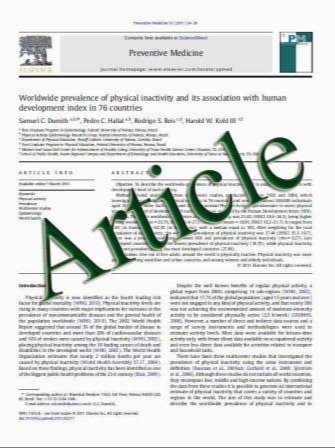The effect of lidocaine, bupivacaine and ropivacaine in nasal packs on pain and hemorrhage after septoplasty
- نوع فایل : کتاب
- زبان : انگلیسی
- مؤلف : Emin Karaman Gurcan Gungor Yalcin Alimoglu Erkan Kilic Eylem Tarakci Pervin Bozkurt Ozgun Enver
- چاپ و سال / کشور: 2011
Description
We aimed to investigate the effects of local anesthetics soaked in Merocel nasal packs on hemorrhage and pain after septoplasty. The methodology includes a prospective double-blind study that was conducted in patients undergoing septoplasty because of nasal septal deviation. The study included 143 patients. The patients were divided into four groups. Each group received 1% lidocaine ? 0.000625% adrenalin, 0.375% ropivacaine, 0.25% bupivacaine as study groups or 0.9% sodium chloride as a control group in their Merocel packs postoperatively. The local anesthetics or sodium chloride were reapplied at the eighth postoperative hour. Each patient was given a questionnaire where verbal analog score and amount of postoperative hemorrhage was noted. The statistical analysis was performed using two sided t test on each patient group at each time point. The results included the patients in the control group needing rescue drug most often. There was no statistically significant difference between bupivacaine and lidocaine plus adrenalin in the patients who requested rescue drug. The patients in the ropivacaine group requested rescue drug more frequently than the bupivacaine and lidocaine plus adrenalin groups. Bupivacaine group had significantly better pain scores versus control group at all intervals except for the first postoperative hour.The bupivacaine group had better pain scores versus ropivacaine and lidocaine plus adrenalin groups in the 4th, 8th and the 24th hours. The bupivacaine group had better pain scores versus lidocaine plus adrenalin in the 12th, 16th and the 20th hours. The ropivacaine group had significantly better pain scores versus control group in the 8th, 12th, 16th, 20th and 24th postoperative hours. The ropivacaine group scored better than lidocaine plus adrenalin group just in the 16th hour. The lidocaine plus adrenalin group had significantly better pain scores versus control group in 4th and 12th hours. There was no statistically significant difference between the study groups in terms of postoperative hemorrhage. We concluded that bupivacaine use in nasal surgery provides better analgesia at least in the first 8 h period and does not cause more bleeding. Topical bupivacaine application to nasal packs should be considered after septoplast
Eur Arch Otorhinolaryngol (2011) 268:685–689,Received: 19 July 2010 / Accepted: 11 November 2010 / Published online: 1 December 2010 Springer-Verlag 2010


